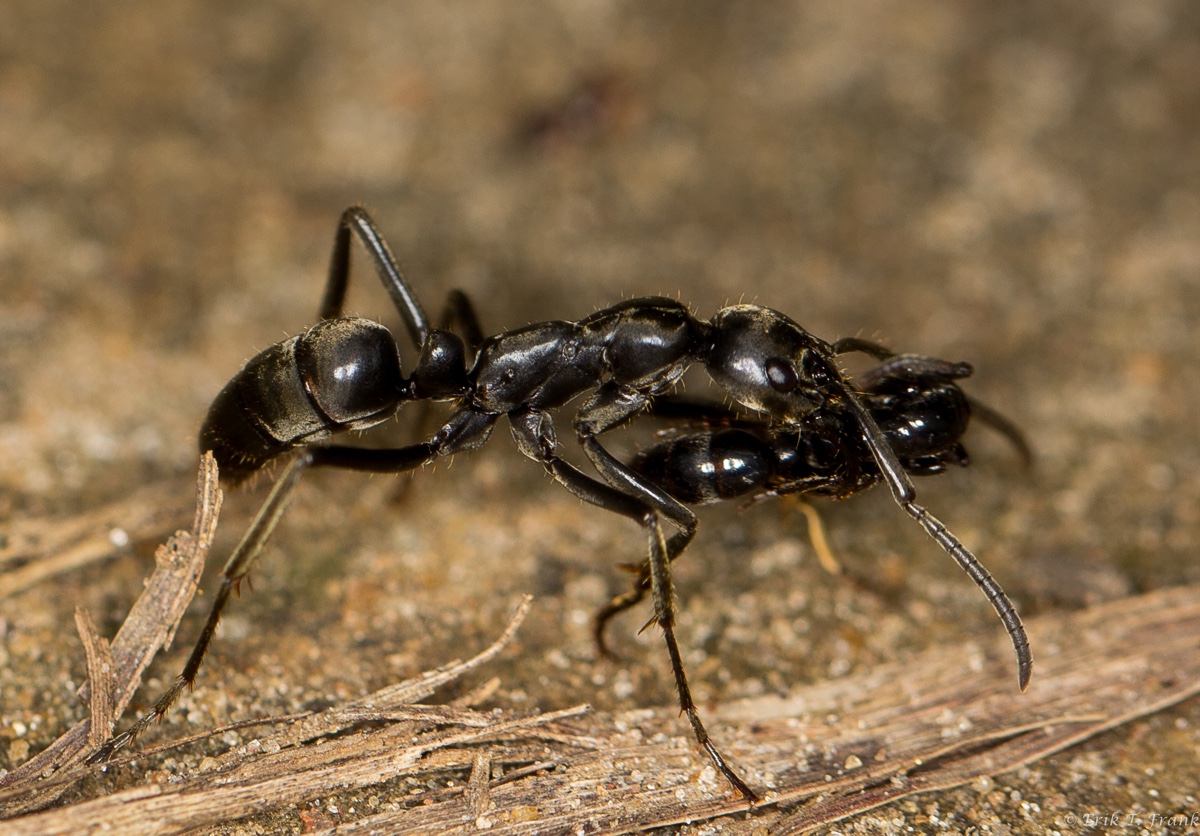On the Battlefield, Ants Treat Each Other's War Wounds
A species of warmongering sub-Saharan ant not only rescues its battle-wounded soldiers but also treats their injuries.
This strikingly unusual behavior raises the survival rate for injured ants from a mere 20 percent to 90 percent, according to new research published Feb. 13 in the journal Proceedings of the Royal Society B.
These same ants, a species called Megaponera analis, were observed last year bringing their injured back to the nest, but no one knew what happened to the wounded ants after that, said study leader Erik Frank, a postdoctoral researcher at the University of Lausanne in Switzerland. Now, it's clear that the ants get extra TLC after being saved from the battlefield. [Mind Control: Gallery of Zombie Ants]
War ants
M. analis is a nondescript-looking species that lives in colonies of several hundred to over a thousand ants. They're skilled raiders, sending out columns of several hundred ants to attack termite nests and drag termite corpses back to their own nests for a feast. These raids, however, often come with a cost: ants with lost or crushed limbs, or even ants limping home with tenacious termites clinging to their bodies.

Frank and his colleagues knew from their previous work at Comoé National Park in northern Côte d'Ivoire that the ants assisted wounded comrades in getting home, but because the ants nest underground, they couldn't see what happened to the war-wounded after the raids. To find out, the team collected whole ant colonies and kept them in darkened artificial nests in the national park's research station. Infrared cameras kept track of the ants inside the nests.
The researchers then staged raids between the ants and captive termites, observing how the ants responded to heavily injured ants with five limbs crushed or amputated versus lightly injured ants with only two lost or damaged limbs.
Ant triage
They found that in the vast majority of cases, severely injured ants were left to die on the battlefield. This version of ant triage wasn't at the behest of the rescuers, Frank said; instead, ants with five missing limbs flailed, rotated and generally refused to cooperate with their rescuers. Ants with two lost limbs, on the other hand, curled up into easy-to-carry balls and let themselves be taken home. [Photos: Ancient Ants & Termites Locked in Amber]
Sign up for the Live Science daily newsletter now
Get the world’s most fascinating discoveries delivered straight to your inbox.
"If you're able to stand up, you're very likely not too injured and you are still useful to the colony, so you should be able to call for help and be rescued," Frank said.
Once back at the nest, healthy ants would attend to the wounded, licking their injuries for sometimes up to minutes at a time. Ants that were prevented from getting this treatment had an 80-percent chance of dying within 24 hours, the researchers found, whereas ants that were cared for had only a 10-percent chance of death.
To find out what was killing the injured, untreated ants, the researchers relocated some to a sterile environment and found that only 20 percent died, indicating that infections are probably the biggest risk for injured ants.
"This seems to strongly suggest that the treatment inside the nest prevents an infection inside the wound," Frank said.
Any uninjured ant seems capable of providing the licking treatment — there's no indication of dedicated ant "medics," Frank said — but it's not yet clear whether the treatment prevents infections or actively treats them.
Either way, the behavior is exciting to see because it's extremely rare to observe any individual animal treating another's wounds in any species, Frank said. It's especially counterintuitive in ants, because the tendency is to think that ant individuals are easily replaced cogs in the machinery of the colony, he said. But in M. analis, colonies aren't that large, and only a dozen or so baby ants are born each day, Frank said.
"Losing one or two ants each day would be quite significant, so they really have to find ways to reduce the mortality in that sense," Frank said. "The individual does matter."
Original article on Live Science.

Stephanie Pappas is a contributing writer for Live Science, covering topics ranging from geoscience to archaeology to the human brain and behavior. She was previously a senior writer for Live Science but is now a freelancer based in Denver, Colorado, and regularly contributes to Scientific American and The Monitor, the monthly magazine of the American Psychological Association. Stephanie received a bachelor's degree in psychology from the University of South Carolina and a graduate certificate in science communication from the University of California, Santa Cruz.









